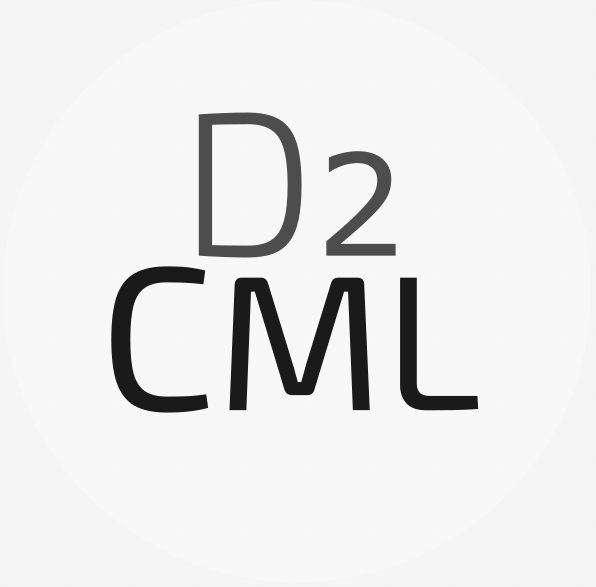22. Debiased ML for Partially Linear Model in R#
This is a simple implementation of Debiased Machine Learning for the Partially Linear Regression Model.
Reference:
https://arxiv.org/abs/1608.00060
https://www.amazon.com/Business-Data-Science-Combining-Accelerate/dp/1260452778
The code is based on the book.
22.1. DML algorithm#
Here we perform estimation and inference of predictive coefficient \(\alpha\) in the partially linear statistical model,
For \(\tilde Y = Y- E(Y|X)\) and \(\tilde D= D- E(D|X)\), we can write
Parameter \(\alpha\) is then estimated using cross-fitting approach to obtain the residuals \(\tilde D\) and \(\tilde Y\).
The algorithm comsumes \(Y, D, X\), and machine learning methods for learning the residuals \(\tilde Y\) and \(\tilde D\), where the residuals are obtained by cross-validation (cross-fitting).
The statistical parameter \(\alpha\) has a causal intertpreation of being the effect of \(D\) on \(Y\) in the causal DAG
or the counterfactual outcome model with conditionally exogenous (conditionally random) assignment of treatment \(D\) given \(X\):
install.packages("librarian")
librarian::shelf(
AER, randomForest, hdm, glmnet
)
Installing package into ‘/usr/local/lib/R/site-library’
(as ‘lib’ is unspecified)
also installing the dependency ‘BiocManager’
These packages will be installed:
'AER', 'randomForest', 'hdm', 'glmnet'
It may take some time.
also installing the dependencies ‘numDeriv’, ‘SparseM’, ‘MatrixModels’, ‘sp’, ‘minqa’, ‘nloptr’, ‘carData’, ‘abind’, ‘pbkrtest’, ‘quantreg’, ‘maptools’, ‘lme4’, ‘iterators’, ‘car’, ‘lmtest’, ‘sandwich’, ‘zoo’, ‘Formula’, ‘checkmate’, ‘foreach’, ‘shape’, ‘Rcpp’, ‘RcppEigen’
DML2.for.PLM <- function(x, d, y, dreg, yreg, nfold=2) {
nobs <- nrow(x) #number of observations
foldid <- rep.int(1:nfold,times = ceiling(nobs/nfold))[sample.int(nobs)] #define folds indices
I <- split(1:nobs, foldid) #split observation indices into folds
ytil <- dtil <- rep(NA, nobs)
cat("fold: ")
for(b in 1:length(I)){
dfit <- dreg(x[-I[[b]],], d[-I[[b]]]) #take a fold out
yfit <- yreg(x[-I[[b]],], y[-I[[b]]]) # take a foldt out
dhat <- predict(dfit, x[I[[b]],], type="response") #predict the left-out fold
yhat <- predict(yfit, x[I[[b]],], type="response") #predict the left-out fold
dtil[I[[b]]] <- (d[I[[b]]] - dhat) #record residual for the left-out fold
ytil[I[[b]]] <- (y[I[[b]]] - yhat) #record residial for the left-out fold
cat(b," ")
}
rfit <- lm(ytil ~ dtil) #estimate the main parameter by regressing one residual on the other
coef.est <- coef(rfit)[2] #extract coefficient
se <- sqrt(vcovHC(rfit)[2,2]) #record robust standard error
cat(sprintf("\ncoef (se) = %g (%g)\n", coef.est , se)) #printing output
return( list(coef.est =coef.est , se=se, dtil=dtil, ytil=ytil) ) #save output and residuals
}
# library(AER) #applied econometrics library
# library(randomForest) #random Forest library
# library(hdm) #high-dimensional econometrics library
# library(glmnet) #glm net
data(GrowthData) # Barro-Lee growth data
y= as.matrix(GrowthData[,1]) # outcome: growth rate
d= as.matrix(GrowthData[,3]) # treatment: initial wealth
x= as.matrix(GrowthData[,-c(1,2,3)]) # controls: country characteristics
cat(sprintf("\n length of y is %g \n", length(y) ))
cat(sprintf("\n num features x is %g \n", dim(x)[2] ))
#summary(y)
#summary(d)
#summary(x)
cat(sprintf("\n Naive OLS that uses all features w/o cross-fitting \n"))
lres=summary(lm(y~d +x))$coef[2,1:2]
cat(sprintf("\ncoef (se) = %g (%g)\n", lres[1] , lres[2]))
#DML with OLS
cat(sprintf("\n DML with OLS w/o feature selection \n"))
set.seed(1)
dreg <- function(x,d){ glmnet(x, d, lambda = 0) } #ML method= OLS using glmnet; using lm gives bugs
yreg <- function(x,y){ glmnet(x, y, lambda = 0) } #ML method = OLS
DML2.OLS = DML2.for.PLM(x, d, y, dreg, yreg, nfold=10)
#DML with Lasso:
cat(sprintf("\n DML with Lasso \n"))
set.seed(1)
dreg <- function(x,d){ rlasso(x,d, post=FALSE) } #ML method= lasso from hdm
yreg <- function(x,y){ rlasso(x,y, post=FALSE) } #ML method = lasso from hdm
DML2.lasso = DML2.for.PLM(x, d, y, dreg, yreg, nfold=10)
cat(sprintf("\n DML with Random Forest \n"))
#DML with Random Forest:
dreg <- function(x,d){ randomForest(x, d) } #ML method=Forest
yreg <- function(x,y){ randomForest(x, y) } #ML method=Forest
set.seed(1)
DML2.RF = DML2.for.PLM(x, d, y, dreg, yreg, nfold=10)
cat(sprintf("\n DML with Lasso/Random Forest \n"))
#DML MIX:
dreg <- function(x,d){ rlasso(x,d, post=FALSE) } #ML method=Forest
yreg <- function(x,y){ randomForest(x, y) } #ML method=Forest
set.seed(1)
DML2.RF = DML2.for.PLM(x, d, y, dreg, yreg, nfold=10)
length of y is 90
num features x is 60
Naive OLS that uses all features w/o cross-fitting
coef (se) = -0.00937799 (0.0298877)
DML with OLS w/o feature selection
fold: 1 2 3 4 5 6 7 8 9 10
coef (se) = 0.01013 (0.0167061)
DML with Lasso
fold: 1 2 3 4 5 6 7 8 9 10
coef (se) = -0.0352021 (0.0161357)
DML with Random Forest
fold: 1 2 3 4 5 6 7 8 9 10
coef (se) = -0.0365831 (0.0151539)
DML with Lasso/Random Forest
fold: 1 2 3 4 5 6 7 8 9 10
coef (se) = -0.0375019 (0.0135088)
prRes.D<- c( mean((DML2.OLS$dtil)^2), mean((DML2.lasso$dtil)^2), mean((DML2.RF$dtil)^2));
prRes.Y<- c(mean((DML2.OLS$ytil)^2), mean((DML2.lasso$ytil)^2),mean((DML2.RF$ytil)^2));
prRes<- rbind(sqrt(prRes.D), sqrt(prRes.Y));
rownames(prRes)<- c("RMSE D", "RMSE Y");
colnames(prRes)<- c("OLS", "Lasso", "RF")
print(prRes,digit=2)
OLS Lasso RF
RMSE D 0.467 0.372 0.372
RMSE Y 0.054 0.052 0.046


